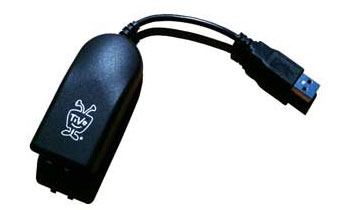Using an In Line Adapter
Using an in line adapter is a great thing to do because it not only solves a lot of problems while installing devices, it also is very cost effective when compared to purchasing new devices altogether. Once we establish and understand exactly how an in line adapter works, we can then go into several examples of using an in line adapter for a variety of purposes.
How Does an In Line Adapter Work?
An adapter is a device that basically is meant to 'adapt' the functioning of one device to the functioning of another. Put to use in a plethora of scenarios, an adapter connects two incompatible devices, appliances, or cables, making it easy for them to work in conjunction with one another.
An in line adapter can be thought of as the missing link that does the trick of making devices compatible. It does not tend to alter anything else in a given arrangement such as the flow of a signal, power, or the flow of any other material. All it does is enable the different devices present to work in a given scenario. An in line adapter is used to 'bridge the gap'.
Using an In Line Adapter
Using an in line adapter is usually a pretty easy job. These adapters are generally small, lightweight and simple. Their usage is more often very self explanatory. Usually made of plastic or aluminum, they have male or female connectors at either end of the device. These connecters either need to be plugged in or screwed in to the required appliances or devices.
In order to go about using an in line adapter effectively, the first thing to do is to choose the correct adapter to fit your requirements. For instance, if you are going to be traveling and have a lot of devices that need to be charged through USB cables, you would want to go for a USB charger in line adapter. You would need to select an adapter that has sufficient number of USB ports to accommodate all the devices you plan to use.
Lets take a look at a few examples to go about using an in line adapter.
- An in line adapter can be used to for the purposes of gardening. A hose adapter is used to connect a hose to the faucet. This would create a more secure connection, avoiding leaks and wastage of water.
- In line adapters are also used to connect headphones to a music player device that is not compatible with them, or to gain additional controls. Several remote adapters with microphone features can be connected in between the phone/music device and the headphones to enjoy enhanced features.
- The connectors on many computer peripherals such as monitors, printers and so on keep changing according to updates in technology. If you find that you are unable to connect a device to your computer due to this problem, using an in line adapter cable will just do the trick for you.
Using an in line adapter is completely dependent on how you require it to be used.

